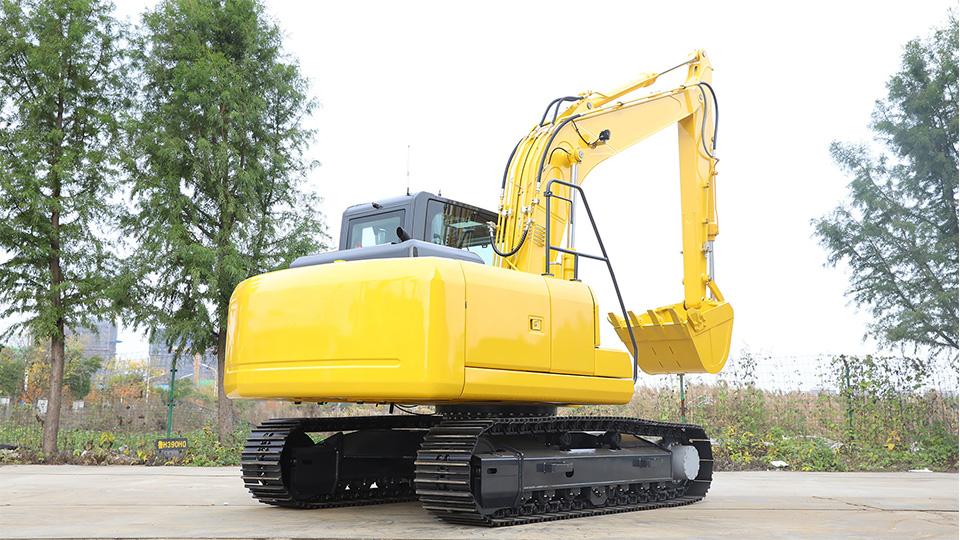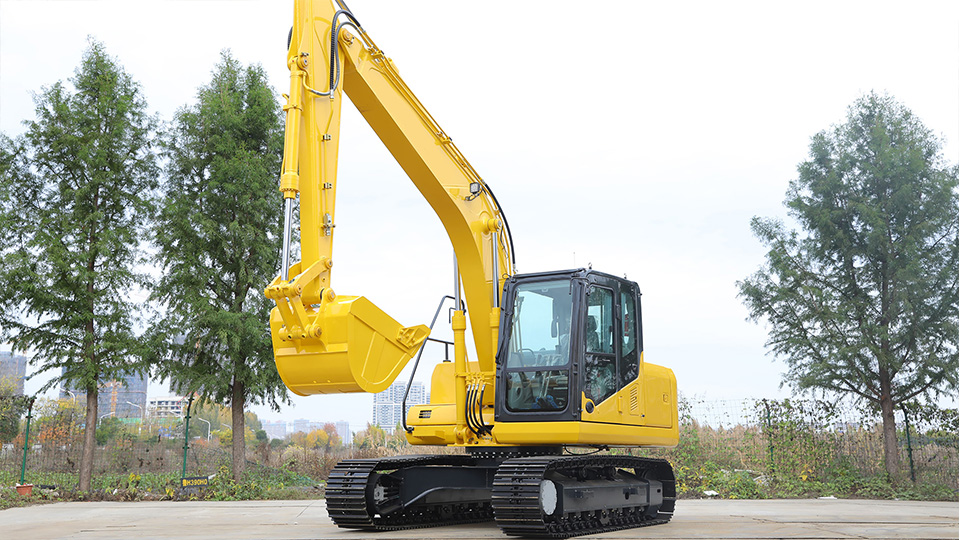The raw power and versatility of an excavator make it an indispensable machine on countless construction, demolition, and excavation sites. However, this very power demands respect and a thorough understanding of safe operating procedures. Neglecting safety precautions when operating an excavator can lead to severe injuries, fatalities, and significant property damage. Ensuring a safe working environment around and with these heavy machines is not just a regulatory requirement; it's a moral imperative.
This comprehensive technical article will delve into the critical safety precautions that must be taken before, during, and after operating an excavator. We will explore pre-operation checks, safe operating practices, awareness of surroundings, proper maintenance, and the importance of comprehensive training. Adherence to these guidelines is paramount for protecting operators, ground personnel, and the integrity of the work site.
I. Pre-Operation Safety Checks: Laying the Foundation for Safe Work
Before even starting the engine, a thorough inspection of the excavator and the surrounding work area is crucial. This proactive approach can identify potential hazards and prevent accidents before they occur.

Fluid Levels: Engine oil, hydraulic fluid, coolant, and fuel levels must be within the recommended ranges. Low fluid levels can lead to overheating, component damage, and loss of hydraulic power.
Leaks: Inspect for any signs of leaks in the engine, hydraulic system (hoses, cylinders, connections), or fuel system. Leaks indicate potential component failure and environmental hazards.
Hoses and Lines: Examine hydraulic hoses and lines for wear, cracks, bulges, or kinks. Damaged hoses can rupture under pressure, causing serious injury.
Tracks or Tires: For tracked excavators, check track tension, wear on track pads, and ensure no loose or damaged segments. For wheeled excavators, inspect tire pressure and condition.
Undercarriage Components: Inspect rollers, idlers, sprockets, and final drives for damage or excessive wear.
Boom, Arm, and Bucket: Check for cracks, bends, or damage to the structural members. Inspect the condition of bucket teeth or cutting edges and ensure proper attachment.
Quick Coupler (if applicable): Verify that the quick coupler is securely engaged and the work tool is properly locked.
Safety Devices: Ensure that all safety devices, such as rollover protective structure (ROPS), falling object protective structure (FOPS), seat belts, and safety interlocks, are in good working order.
Mirrors and Lights: Check the condition and cleanliness of mirrors and ensure all lights (headlights, work lights, signal lights) are functional.
Audible and Visual Warning Devices: Test the horn and any other audible or visual warning systems.
Operator's Cab: Ensure the cab is clean, free of obstructions, and that all controls (levers, pedals, switches) operate smoothly and correctly.
Work Area Assessment: Before commencing any excavation or lifting operation, the operator must thoroughly assess the work area for potential hazards:
Overhead Obstructions: Identify and be aware of any overhead power lines, trees, or structures that could come into contact with the excavator's boom or arm. Maintain the minimum safe clearance distances from power lines as mandated by regulations.
Underground Utilities: Before digging, always check for underground utilities such as gas lines, water pipes, electrical cables, and fiber optic lines. Contact local utility companies or use "Call Before You Dig" services to locate and mark these utilities. Striking an underground utility can have catastrophic consequences.
Ground Conditions: Evaluate the stability of the ground where the excavator will be operating. Avoid working on unstable slopes, soft soil, or near excavations that could collapse. Use appropriate ground support or stabilization measures if necessary.
Swing Radius: Be acutely aware of the excavator's swing radius and ensure that no personnel or obstructions are within this area when the upper structure is rotating. Establish and clearly mark a "swing clear" zone.
Pedestrian and Vehicle Traffic: Implement clear traffic management plans to separate excavators from pedestrian and vehicle traffic. Use barriers, signage, and spotters as needed.
Environmental Conditions: Be mindful of weather conditions such as heavy rain, snow, ice, or strong winds, which can affect visibility and ground stability. Postpone operations if conditions are deemed unsafe.
Confined Spaces: If operating in a confined space, ensure adequate ventilation and follow specific confined space entry procedures.

II. Safe Operating Practices: Executing Tasks with Precision and Awareness
Once the pre-operation checks are complete and the work area is deemed safe, adhering to safe operating practices during the task is paramount.
Proper Startup and Shutdown Procedures: Follow the manufacturer's recommended procedures for starting and shutting down the excavator. Allow the engine to warm up before putting it under full load.
Seat Belt Use: Always wear the seat belt while operating the excavator. This is crucial for remaining within the protective confines of the ROPS/FOPS in the event of a rollover or falling object.
Smooth and Controlled Movements: Operate the controls smoothly and avoid sudden or jerky movements. Abrupt actions can destabilize the machine, especially when lifting or swinging loads.
Maintaining Stability: Be aware of the excavator's center of gravity and its limitations. Avoid overreaching or lifting loads beyond the machine's rated capacity at a given radius. Consult the load chart specific to the excavator model and configuration.
Working on Slopes: Exercise extreme caution when operating on slopes. Follow the manufacturer's recommendations for maximum allowable slopes. When working across a slope, keep the tracks perpendicular to the incline whenever possible. Avoid sudden turns or movements that could cause the machine to tip.
Lifting Operations: If using the excavator for lifting, ensure that the lifting attachment is certified and properly installed. Never exceed the rated lifting capacity and maintain a slow and controlled pace. Avoid swinging loads over personnel.
Digging Techniques: Employ proper digging techniques to maintain stability and prevent damage to the machine or surrounding utilities. Dig in a manner that keeps the machine level and avoids undermining the ground beneath the tracks or tires.
Visibility: Maintain clear visibility of the work area at all times. Keep windows clean and use mirrors effectively. If visibility is restricted, use a spotter who is in clear communication with the operator.
Communication: Establish clear communication signals with ground personnel, especially when working in congested areas or when a spotter is required. Use hand signals or two-way radios as appropriate.
Avoiding Overloading: Never attempt to lift or move loads that exceed the excavator's rated capacity for the given configuration and reach. The load chart provides critical information on safe lifting limits.
Awareness of Surroundings: Continuously scan the work area for changes in conditions, the presence of personnel, and potential hazards. Be particularly vigilant when swinging the upper structure.
Parking Procedures: When parking the excavator, choose a level and stable surface. Lower the work tool to the ground, engage the parking brake, and shut down the engine following the manufacturer's instructions. Secure the machine if it is to be left unattended for an extended period or on an incline.
III. Awareness of Surroundings: The Eyes and Ears of Safe Operation
Maintaining constant awareness of the environment around the excavator is fundamental to preventing accidents.
Blind Spots: Be aware of the excavator's blind spots. These are areas around the machine that are not directly visible from the operator's seat. Utilize mirrors, cameras, and rely on spotters when necessary to compensate for these limitations.
Ground Personnel: Always be aware of the location of ground personnel. Never swing the boom or bucket towards anyone. Establish a clear understanding that no one should approach the excavator without making eye contact with the operator.
Other Equipment: Be mindful of other equipment operating in the vicinity. Maintain safe distances and coordinate movements to avoid collisions.
Obstacles: Continuously scan for obstacles such as rocks, debris, or uneven terrain that could affect the stability or movement of the excavator.
Power Lines: Maintain the mandated safe clearance distances from overhead power lines at all times. Never operate the excavator closer than the specified limit. If working near power lines is unavoidable, contact the utility company for guidance and potential de-energization.
Underground Utilities: Remember the potential presence of unmarked underground utilities. If encountering any signs of a potential utility strike (e.g., smell of gas, exposed wires), immediately stop work and follow emergency procedures.
IV. Proper Maintenance: Ensuring the Machine's Continued Safety
Regular and thorough maintenance is not just about maximizing the excavator's lifespan; it's a critical safety measure. A well-maintained machine is less likely to experience component failures that could lead to accidents.
Following Manufacturer's Recommendations: Adhere to the manufacturer's recommended maintenance schedule for inspections, lubrication, filter changes, and component replacements.
Addressing Defects Promptly: Any defects or malfunctions identified during pre-operation checks or during operation must be reported immediately and addressed before the excavator is put back into service. Never operate a machine that is known to have safety issues.
Qualified Personnel: Ensure that maintenance and repairs are performed by qualified and trained personnel using the correct parts and procedures.
Record Keeping: Maintain accurate records of all maintenance and repairs performed on the excavator. This helps track the machine's history and identify potential recurring issues.
Hydraulic System Maintenance: Pay particular attention to the hydraulic system, ensuring proper fluid levels, checking for leaks, and replacing filters regularly. Hydraulic system failures can lead to loss of control.
Wear Item Replacement: Regularly inspect and replace worn items such as bucket teeth, cutting edges, hoses, and tracks to maintain optimal performance and safety.
V. Comprehensive Training: The Cornerstone of Safe Operation
Proper training is the most fundamental aspect of ensuring safe excavator operation. Only individuals who have received thorough instruction and are deemed competent should be allowed to operate these machines.
Formal Training Programs: Operators should undergo formal training programs that cover all aspects of safe operation, including pre-operation checks, operating procedures, hazard identification, emergency procedures, and basic maintenance.
Machine-Specific Training: Training should be specific to the make and model of the excavator being operated, as controls and features can vary.
Practical Experience: Classroom instruction should be supplemented with sufficient hands-on practical experience under the supervision of a qualified instructor.
Refresher Training: Regular refresher training should be provided to reinforce safe operating practices and update operators on any new regulations or machine features.
Competency Assessment: Operators should undergo competency assessments to ensure they have the necessary skills and knowledge to operate the excavator safely.
Authorization: Only authorized and trained personnel should be permitted to operate the excavator.
Conclusion:
Operating an excavator safely requires a multifaceted approach that encompasses thorough pre-operation checks, adherence to safe operating practices, constant awareness of the surroundings, diligent maintenance, and comprehensive training. Neglecting any of these aspects significantly increases the risk of accidents and injuries. By prioritizing safety and implementing these essential precautions, we can harness the power and versatility of excavators while ensuring a safe working environment for everyone on the job site. The responsibility for safety rests with everyone involved, from the operator to the site supervisor, and a commitment to these principles is paramount for preventing tragic incidents and fostering a culture of safety in the heavy equipment industry.
Post time:Sep-25-2020
